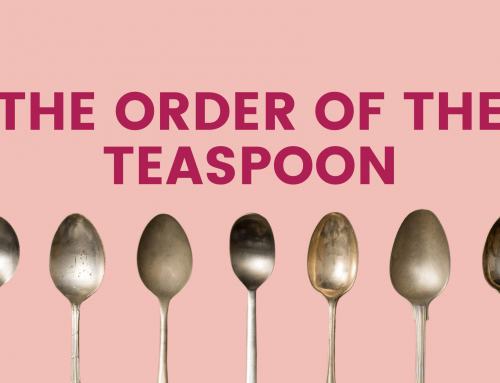Learn more about the Fruit Sugar
I was visiting my parents this weekend and was reminded of something that Ben Pratt, a really interesting speaker at the European Weston Price European Conference covered.
Glancing at the ingredients of my parents’ jam choice, I noticed that ‘Fructose’ was top of the ingredients list. Knowing a thing or two about sugar, I naturally pointed out that Fructose isn’t great for the body.
We started talking about it and they of course highlighted the common misunderstanding that Fructose is fruit sugar and must therefore be healthy!

I cover Fructose in my ebook, Sugar: Sickly or Sweet, but wanted to dig deeper into why fructose isn’t great for you in this post.
So to do that, here’s an extract for an article that Ben Pratt wrote on his site: Natural Food Finder. It’s quite technical in parts and I’ve edited it down for you, but you’ll appreciate why not all sugars are the same:
‘Typical white sugar is more correctly called ‘sucrose’ which is a combination of the basic units glucose and fructose in an approximately 50:50 ratio.
Over the years these 2 molecules have developed different reputations in relation to health. Glucose has taken the brunt of abuse for disrupting our blood glucose levels, driving up insulin and playing a primary role in the causation of obesity and diabetes; whilst Fructose has been branded as healthy because it is known as the fruit sugar.
Glucose is the compound that serves as the basis of comparison for every other food listed on the glycaemic index. Glucose is traditionally given a value of 100 and then other foods are tested and have their rate of absorption compared to glucose and given a respective value.
Years ago when glycaemic index was becoming mainstream it was pointed out that fructose had a very low glycaemic index and therefore must be helpful in maintaining lower blood glucose levels. It was promoted for some time as being diabetic ‘friendly’ as well. That tag has quickly faded away as research has show that fructose actually makes the insulin resistance that underlies the condition even worse!
When the intestine absorbs glucose it is able to draw it directly through the tissues into the blood stream to be shipped around for use in body cells, especially the brain and nervous system. The overwhelming majority of glucose that may reach the liver is converted to the perfectly safe storage form of glycogen.
Fructose is not delivered direct into the blood stream. It is passed up a direct blood supply between the intestine and the liver called the hepatic portal vein. Fructose is then managed by the liver and often goes through different metabolic processes prior to being released into the blood again. It is this transport via the liver that gives fructose its low glycaemic index because it takes longer to impact on the blood.
Whilst glucose has a very effective system for ensuring it enters the cells quickly without too many negative effects, that is it is controlled by insulin, fructose is a more complicated beast. There are several key concerns with the way fructose is managed within the body.
- Significant amounts of fructose delivered to the liver cannot be metabolised by the cells and get converted to triglycerides (fats)
- Fructose alters liver enzyme function increasing liver insulin resistance (diabetic tendencies) leading to higher blood insulin and greater visceral fat storage
- Fructose undergoes the Maillard (browning) reaction 7 times faster than glucose suggesting it may increase cellular glycation, aging processes and cancer formation
- Fructose has, in many ways, similar effects on the liver as alcohol
Dr Robert Lustig refers to fructose as the ‘…same poison as alcohol but without the buzz!’ Unlike alcohol, fructose is not metabolised in the brain and as such does not have the same deleterious effects on behaviour.
However, fructose causes the liver to still take the brunt of the damage under the radar potentially leading to a condition called non-alcoholic fatty liver disease. This is basically the same set of problems that destroys the liver of an alcoholic, but as the name suggests it is not caused by alcohol. It is caused by fructose excess!
So what about these so called ‘healthy’ sweeteners used by the the side of the food industry that cares? Well you decide.
Agave syrup (or ‘nectar’ as it is often called to make it sound better), even the organic variety, is normally between 70-95% fructose. Bearing in mind that the health damaging reputation of industrial high fructose corn syrup (the sweetener of choice for the soft drinks industry) has been built on a 55% fructose blend, it doesn’t really bode too well for Agave.
All the negative effects listed above will clearly be enhanced with richer doses of fructose being sent to the liver down the portal vein.
Another option often used in health food bars and in supposedly better tinned fruit is ‘fruit concentrate’ or fruit juice.This is exactly what the name suggests, the juice of a given fruit with the water boiled off so as to concentrate the sugars within. This will damage most of the vitamin content leaving primarily a concentrated source of sugar behind. In fact it is not uncommon to find the most used juice concentrates are from apples, grapes and pears as these have the highest naturally occurring fructose content and taste sweeter as fructose has over 70% more sweetness than typical sucrose.
Simple squeezed fruit juice may not be concentrated, but it still allows for an increased intake of sugar compared to eating a whole piece of fruit. For example a single apple has a glycaemic index or 40 and a glycaemic load of 6, whereas a glass of pure apple juice has a GI of 44 and a GL of 13 – more than double the volume of sugar within a comparative ‘portion’ of fruit. A similar story is found with most fruit juices. Therefore on this basis it becomes difficult to see how pure fruit juice can be as beneficial to health as eating whole fruit. Twice the sugar in one portion will only increase the negative impact on the body and if it is apple or grape juice you will get a hard liver hitting dose of fructose to boot!
So what does it all boil down to? Sugar from any source is still sugar. Eaten in excess amounts it can still upset blood chemistry, poison the liver and lead to ill health. However, science is steadily showing that processing foods to increase the fructose content has and is leading us down the road of dysfunction and disease. Fruit juice doubles our sugar intake compared to fruit alone.
Can whole fruit still be part of a ‘good’ diet? Well certainly, but perhaps in moderation and only when in season. It may be best to emphasise a broad and plentiful supply of vegetables to draw in needed vitamins and minerals.’
For more tips on sustainable energy and performance, sign-up for our Healthy Habits newsletter:







